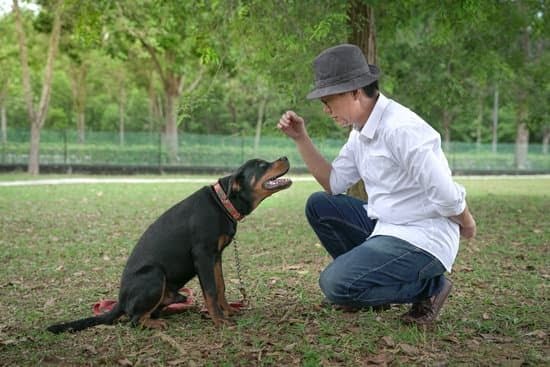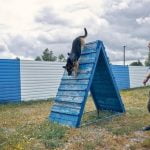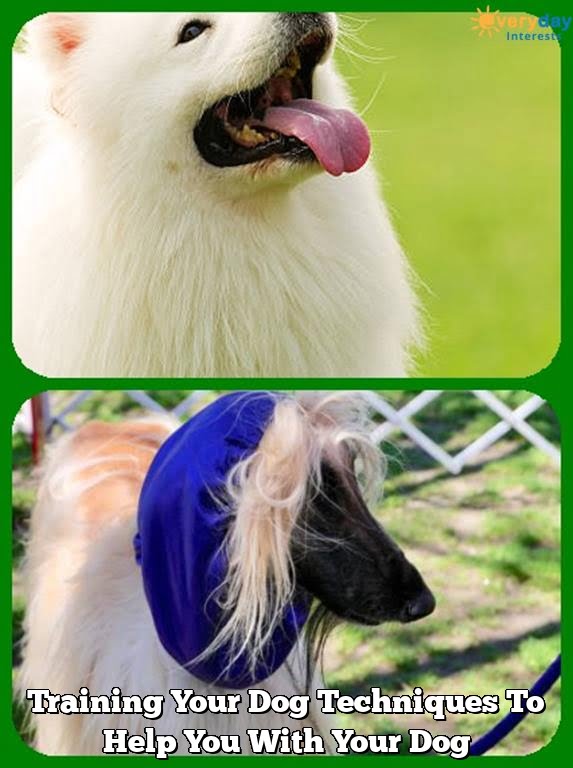How do you lead train your dog? Leadership training for dogs is essential for creating a harmonious and well-behaved pet.
Understanding the importance of this training is crucial for both the owner and the dog, as it sets the foundation for a strong bond and effective communication. In this article, we will explore key principles and techniques to establish yourself as the pack leader, set clear boundaries and expectations, utilize positive reinforcement training, maintain consistency in your approach, address behavioral issues, incorporate obedience training, and sustain long-term leadership with your dog.
Leadership training for dogs goes beyond teaching basic commands; it focuses on establishing a structured environment where your dog understands their place in the pack hierarchy. By implementing effective leadership training, you can create a sense of security and stability for your dog while also fostering a deeper connection based on trust and respect.
It is important to recognize that leadership training not only benefits your dog’s behavior but also contributes to their overall well-being. Through this comprehensive approach to training, you can address behavioral issues such as aggression and anxiety while nurturing a balanced and well-adjusted pet. Join us as we delve into the world of leadership training for dogs, exploring proven strategies to guide you in creating a fulfilling and enriched relationship with your canine companion.
Establishing Yourself as the Pack Leader
The Importance of Leadership
Before delving into specific techniques for leadership training, it’s important to understand why establishing yourself as the pack leader is crucial for your dog’s well-being. Dogs are pack animals by nature, and they thrive in environments where there is a clear leader to provide guidance and direction.
Without a strong leader, dogs may exhibit behavioral issues such as anxiety, fearfulness, or aggression. By taking on the role of pack leader, you can instill a sense of security and confidence in your dog, leading to a more balanced and well-adjusted pet.
Communication and Body Language
One of the key principles in establishing yourself as the pack leader is effective communication with your dog. Dogs communicate primarily through body language, so it’s essential that you learn to convey leadership through your posture, tone of voice, and overall demeanor. When interacting with your dog, maintain a calm and assertive energy to project confidence and authority.
Avoid using harsh punishment or aggression, as this can lead to fear-based behaviors in your dog. Instead, focus on clear communication and consistent reinforcement of rules and boundaries.
Consistency in Training
Consistency is another fundamental aspect of leadership training for dogs. Establishing yourself as the pack leader requires unwavering consistency in both your actions and expectations for your dog. Consistency helps create a structured environment that allows your dog to understand their place within the pack hierarchy.
Set clear rules and boundaries for behavior, and always follow through with consistent consequences for disobedience or unwanted behavior. When you maintain consistency in your leadership approach, it provides clarity for your dog and reinforces the structure they need to thrive.
As you embark on leadership training for your dog, remember that it is an ongoing process that requires patience, dedication, and commitment. By implementing these key principles and techniques, you can effectively establish yourself as the pack leader while fostering a strong bond with your furry companion.
Setting Clear Boundaries and Expectations
Creating a structured environment for your dog is essential in leadership training. By establishing clear boundaries and expectations, you are providing your dog with the guidance they need to understand their role within the pack. Here are some key principles and techniques for creating a structured environment for your dog:
1. Establishing Rules: Set clear rules for your dog to follow in the house, such as where they are allowed to go, where they can sleep, and when it’s mealtime. Consistency is crucial in enforcing these rules so that your dog understands what is expected of them.
2. Providing Routine: Dogs thrive on routine, so it’s important to establish a daily schedule for feeding, walking, playtime, and training sessions. This predictability helps create a sense of security and stability for your dog.
3. Creating Physical Boundaries: Use physical barriers or tools such as baby gates or crates to limit your dog’s access to certain areas of the house. This not only helps prevent unwanted behavior but also reinforces the idea of boundaries and limitations.
By setting clear boundaries and expectations in a structured environment, you are effectively communicating to your dog what behaviors are acceptable and what aren’t. This builds a strong foundation for leadership training and helps foster a harmonious relationship between you and your pet.
Positive Reinforcement Training
Understanding the Principles of Positive Reinforcement
The key principle behind positive reinforcement training is simple: rewarding desirable behavior increases the likelihood that it will be repeated. When your dog performs a desired behavior, such as sitting on command or walking nicely on a leash, immediately reward them with a treat or praise. This helps them learn that performing that behavior results in something positive, making them more likely to do it again in the future.
Using Rewards Effectively
When using positive reinforcement, it’s important to choose rewards that are highly motivating for your dog. Some dogs are motivated by food treats, while others may prefer toys or verbal praise. Experiment with different types of rewards to determine what works best for your individual dog. Additionally, timing is crucial when using rewards – be sure to administer the reward immediately after the desired behavior is performed so that your dog associates the reward with their action.
Consistency and Patience
Consistency is key when using positive reinforcement training. It’s important to consistently reward the desired behavior every time it occurs, at least until the behavior becomes well-established. Additionally, patience is essential when using this training method. Remember that learning takes time and effort for both you and your dog, so remain patient and consistent in order to see long-term results from positive reinforcement training.
By implementing positive reinforcement training methods, you can effectively encourage good behavior in your dog while strengthening your bond with them. This approach creates a positive learning environment for your pet and sets them up for success in their training journey.
Consistency Is Key
Consistency in training your dog is crucial for their development and understanding of what is expected of them. A consistent training regimen means that you are regularly reinforcing the same behaviors, commands, and expectations, which helps to create a structured environment for your dog. Here are some key reasons why consistency is essential in leading and training your dog:
- Reinforces Learning: Consistency helps your dog understand what behavior is desired and expected from them. By consistently rewarding good behavior and correcting unwanted behavior, your dog will learn what is acceptable and what is not.
- Builds Trust: When you are consistent with your leadership and training, your dog learns to trust you as their pack leader. They rely on you for guidance and direction, and by being consistent, you establish yourself as a reliable source of leadership.
- Prevents Confusion: Inconsistency in training can lead to confusion for your dog. If one day they are allowed on the couch and the next day they are not, it creates uncertainty for them. Consistency eliminates this confusion and provides clear boundaries for your pet.
In order to maintain a consistent training regimen, it’s important to establish clear rules and expectations from the beginning. This includes setting boundaries in terms of where your dog is allowed to go, what they are allowed to do, and how they should behave in different situations. Consistency also extends to using the same commands for specific behaviors, reinforcing those commands with positive reinforcement such as treats or praise, and correcting any unwanted behavior promptly but calmly.
Ultimately, maintaining consistency in leadership training for your dog will result in a well-behaved pet who understands their role within the family pack. With dedication and patience, you can leadh train yor dog effectively by creating a consistent and structured training regimen that reinforces positive behaviors while addressing any challenges that may arise along the way.
Addressing Behavioral Issues
One effective strategy for dealing with aggression and anxiety in dogs is through desensitization and counterconditioning. This involves gradually exposing your dog to the stimuli that trigger their negative behavior while encouraging positive reactions through rewards and praise. By changing their emotional response to these triggers, you can help your dog overcome their aggressive or anxious tendencies.
In addition to desensitization and counterconditioning, it’s important to seek professional help if your dog’s behavioral issues persist or worsen. A certified dog trainer or animal behaviorist can provide valuable insights and personalized training programs tailored to your dog’s specific needs. With patience, consistency, and the right guidance, many behavioral issues in dogs can be successfully addressed through leadership training.
| Behavioral Issue | Strategy |
|---|---|
| Aggression | Desensitization and Counterconditioning |
| Anxiety | Professional Training Assistance |
Incorporating Obedience Training
Obedience training is an essential aspect of leadership training for your dog. This type of training involves teaching your dog basic commands and manners, such as sit, stay, come, and walking on a leash without pulling. Obedience training not only helps your dog understand how to behave in different situations but also strengthens the bond between you and your pet.
One of the key principles in obedience training is using positive reinforcement to encourage good behavior. This means rewarding your dog with treats, praise, or toys when they follow a command correctly. It’s important to be patient and consistent during obedience training sessions, as learning takes time and practice.
Consistency is crucial when incorporating obedience training into your leadership training regimen. It’s important to set clear boundaries and expectations for your dog and enforce them consistently. Dogs thrive in structured environments where they understand what is expected of them. By practicing obedience training regularly and maintaining consistency, you can help your dog develop good manners and become well-behaved.
| Obedience Training Principles | Benefits |
|---|---|
| Positive reinforcement | Strengthens bond between owner and pet |
| Consistency | A well-behaved and well-trained dog |
Maintaining Leadership
Once you have established yourself as the pack leader and successfully trained your dog, the work doesn’t end there. It is important to maintain your leadership role in the long term to ensure that your dog remains well-behaved and well-trained. Consistency is key in sustaining the training and ensuring that your dog continues to follow commands and boundaries.
One long-term strategy for maintaining leadership is to continue reinforcing positive behavior through consistent positive reinforcement training. This means rewarding good behavior with treats, praise, or playtime to encourage your dog to continue exhibiting the desired behavior. By consistently rewarding positive actions, you are reinforcing the behaviors that you want to see from your dog.
Another important aspect of maintaining leadership is to continue addressing any behavioral issues that may arise. Dogs, like humans, can experience changes in their environment or health that may lead to new behavioral challenges. It’s crucial to stay observant of any changes in your dog’s behavior and address these issues promptly using appropriate training strategies. Seeking professional help from a qualified trainer or veterinarian can also be beneficial in addressing more complex behavioral issues.
In addition, incorporating regular obedience training sessions into your routine can help reinforce your role as the leader while providing mental stimulation for your dog. Teaching new commands or practicing existing ones can keep their mind engaged and reinforce their understanding of who sets the rules. Overall, by maintaining consistency, addressing behavioral issues promptly, and continuing obedience training, you can sustain a strong leadership role and enjoy a well-behaved and well-trained dog for years to come.
Overall it is clear how do you lead train your dog effectively if you remain consistent with rewards and discipline techniques while keeping an eye on any potential behavioral problems that could emerge over time.
Conclusion
In conclusion, leadership training for dogs is a crucial component of responsible pet ownership. By establishing yourself as the pack leader and setting clear boundaries and expectations, you can create a structured environment for your dog to thrive in. Positive reinforcement training using rewards can encourage good behavior, while consistency in your training regimen is key to long-term success.
It’s important to address any behavioral issues that may arise with strategies such as dealing with aggression, anxiety, or other challenges. Incorporating obedience training by teaching your dog basic commands and manners can further reinforce your role as the leader.
Overall, leadership training not only results in a well-behaved and well-trained dog but also fosters a strong bond between you and your pet. The benefits of leadership training extend beyond simply correcting behaviors; it creates a harmonious relationship between you and your furry companion built on trust, respect, and understanding.
So if you were wondering “how do you lead/train your dog,” just remember that leadership training is an ongoing process that requires patience, consistency, and love for your pet.
Frequently Asked Questions
What Is the Fastest Way to Leash Train a Dog?
The fastest way to leash train a dog is through positive reinforcement and consistency. Start by getting the dog used to wearing a collar and then slowly introducing the leash, rewarding good behavior with treats or praise.
How Do You Train a Dog to Use a Leash?
Training a dog to use a leash involves gradually introducing them to the equipment, using positive reinforcement techniques, and providing consistent training sessions. It’s important to remain patient and stay calm throughout the process.
How Do I Train My Dog to Walk on a Leash Without Pulling?
To train your dog to walk on a leash without pulling, start by teaching them basic obedience commands like “heel” or “leave it.” Use treats, toys, or praise as rewards for walking calmly without pulling. Consistency and patience are key in this training process.

Welcome to the blog! I am a professional dog trainer and have been working with dogs for many years. In this blog, I will be discussing various topics related to dog training, including tips, tricks, and advice. I hope you find this information helpful and informative. Thanks for reading!





